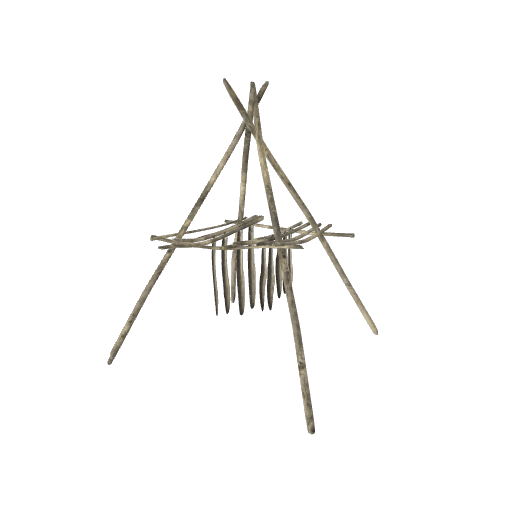Smoking rack
Wolastoqiyik: katiyik
Mi’kmaq: najiga'te'get
The smoking rack is used to hang fish over the fire for smoking. Made of large wooden poles, it is triangular with a square base. It can also take the form of a fish flake, a slatted platform made of latticework. Smoking is a food preservation technique mainly used to process both freshwater and saltwater fish such as eels, trout, salmon, or sturgeon.
After its capture, the fish is gutted, opened lengthwise and drained. Its flesh is then carved to allow the smoke to penetrate it. The fish is finally hung on the smoking rack over the fire, far enough from the heat so that it does not cook. The flesh then loses its water and is infused with smoke, which sanitizes the food. This prevents bacteria from infecting the fish, thus keeping it from rotting and increasing its preservation time.
Once smoked, the fish is stored in large containers. These provisions are mainly consumed in the fall and early winter when game is more difficult to hunt. Food is considered a collective good and is shared among the members of the group depending on their needs.
References
Origin: Digital 3D drawing
Sources:
Doisne, M. (n.d.). Fumage du poisson au Québec [Fish smoking in Quebec]. In Encyclopedia of French Cultural Heritage in North America. Retrieved September 10, 2022, from http://www.ameriquefrancaise.org/fr/article-637/Fumage_du_poisson_au_Qu%C3%A9bec.html#.YwaQvHbMKUk
Gouvernement du Québec. (n.d.). Fumage du poisson [Fish smoking]. Répertoire du patrimoine culturel du Québec. Retrieved September 10, 2022, from https://www.patrimoine-culturel.gouv.qc.ca/rpcq/detail.do?methode=consulter&id=66&type=imma
